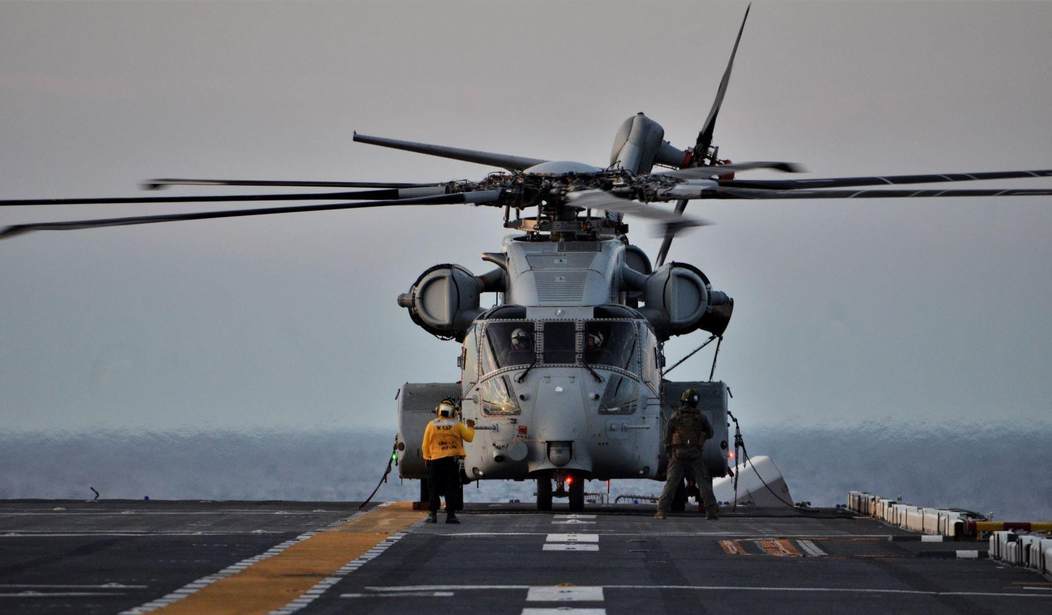Congress is in the process of drafting the National Defense Authorization Act (NDAA) for the year. The Senate version has already been the target of changes and clocks in at $741 billion while the House is still in the process of scheduling a full floor debate. When setting new levels of spending for the hardware they will give to the military to fight the next war, Congress needs to look to the future and not to the past.
It is a common human trait to expect the future to look like the past. If you are in the middle of a snowstorm, it is safe to assume that eventually the storm will end and the snow will melt. After all, it has always done so.
Unfortunately, the future does not always mirror the past and assuming it will may cause problems. A person can act in good faith, but if circumstances change, and many times they do, what worked in the past may not work in the future.
A prime example of this mindset comes from the military. Officers are always studying past battles because they have come to assume the next fight will resemble a previous one. This leads them to “preparing to fight the last war.”
This “looking to the past to anticipate the future” phenomenon can happen whether the military won or lost a previous war. For example, in the 1991 Gulf War, the Iraqi army came out to fight and coalition forces essentially destroyed it within 100 hours. It does not make sense to expect future foes to do the same thing. The Iraqi army is likely to attempt to avoid set-piece battles and instead rely on guerrilla tactics to inflict damage without exposing themselves to destruction.
Too often our military wastes time, energy, and money preparing for the last battle instead of anticipating the next one. To see a prime example of this look no further than the CH-53K King Stallion helicopter. Supposedly it is the “next generation” weapons system for the Marine Corps. In real life, it looks like a relic from 1991 or even from the Vietnam War.
The King Stallion is designed to tote heavy weapons into battle. “It can carry Humvees, two 20,000 pound pallets, or infantry internally,” Popular Mechanics reported in a deep-dive story about the helicopter. While impressive, this design assumes there will not only be an enemy waiting for American troops but equipment to assemble for battle as well.
What if the enemy adopts quick hit-and-run tactics? The King Stallions could do their job and fly Humvees and personnel from one place to another without those vehicles or Marines ever making it into battle. By the time the helicopters touch down, the enemy could be long gone.
This “preparing to fight the last war” is not just inefficient, it is prohibitively expensive. “Each CH-53K will now cost $138.5 million, up from $131.2 million one year ago,” Popular Mechanics writes. That is roughly $30 billion for 200 helicopters.
The trend line on cost is supposed to come down as weapons systems come into place; the tenth platform should cost less than the first, and the twentieth less than the tenth, and so on. With the King Stallion, that trend line is going in the wrong direction. From 2016 to 2017, the total cost of the system increased by 6.9 percent. That is a huge chunk of money in one year.
We simply cannot afford to sit around and hope that things get better. Lawmakers should say enough is enough and call for an end to spending on this expensive program.
Doing so would not harm the military. After all, experts in the Pentagon are already exploring options to use existing helicopters instead of going exclusively with the new model. The Office of Cost Assessment and Program Evaluation says it will provide “an assessment of alternatives for other platforms that might meet the mission.”
This is sensible because the Marines already know there are “multiple design deficiencies discovered during early testing,” according to a Pentagon report on the King Stallion. “These include: airspeed indication anomalies, low reliability of main rotor gearbox, hot gas impingement on aircraft structures, tail boom and tail rotor structural problems, overheating of main rotor dampers, fuel system anomalies, high temperatures in the #2 engine bay, and hot gas ingestion by the #2 engine, which could reduce available power.”
Lawmakers need to make sure the military has the tools to fight the next war. As the budget deficit soars because of Covid-19 that will require thriftiness. The King Stallion is a throwback we can simply no longer afford.
Mary Catherine McElhone is a conservative grassroots activist and chair of the Missouri Federation of Young Republicans.









Join the conversation as a VIP Member